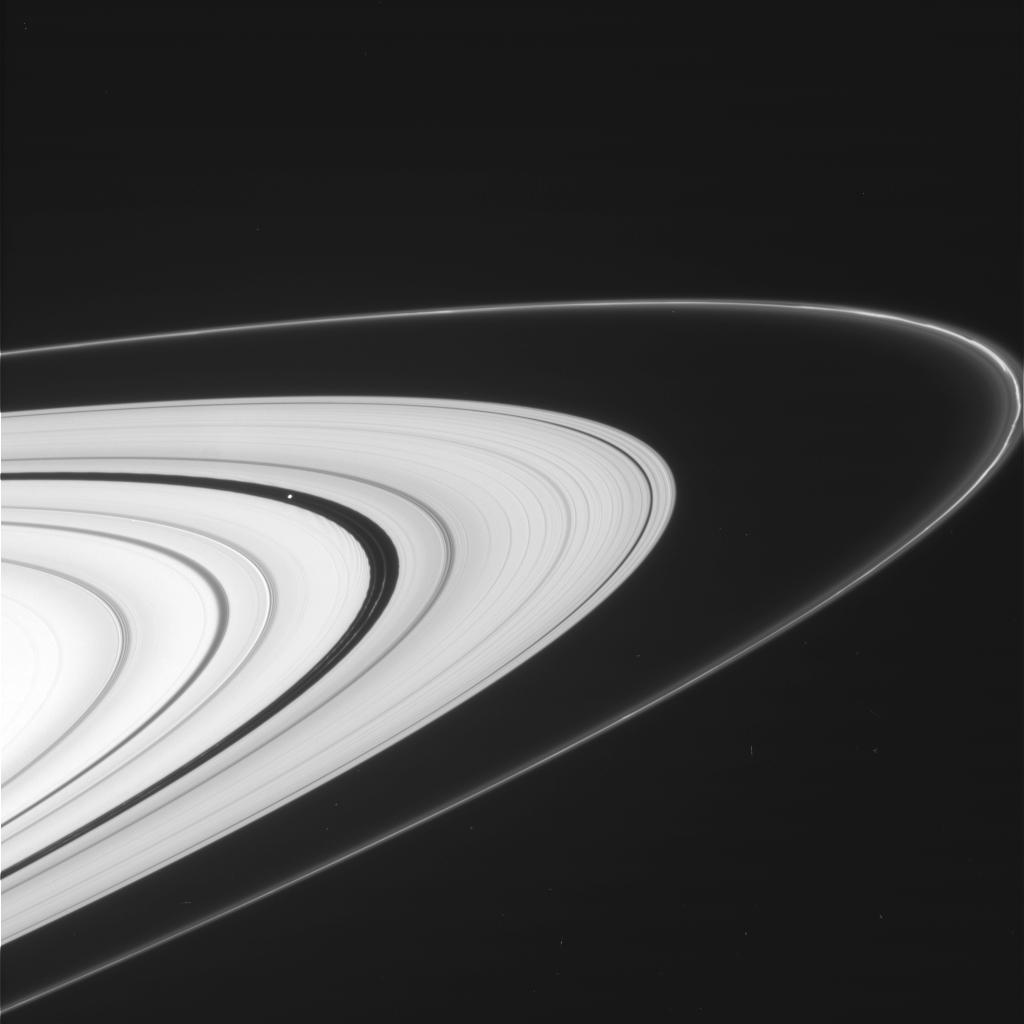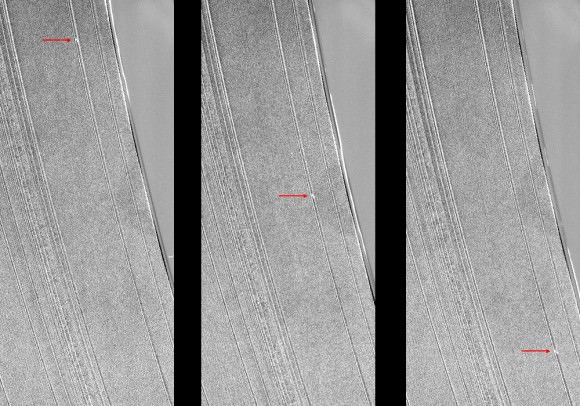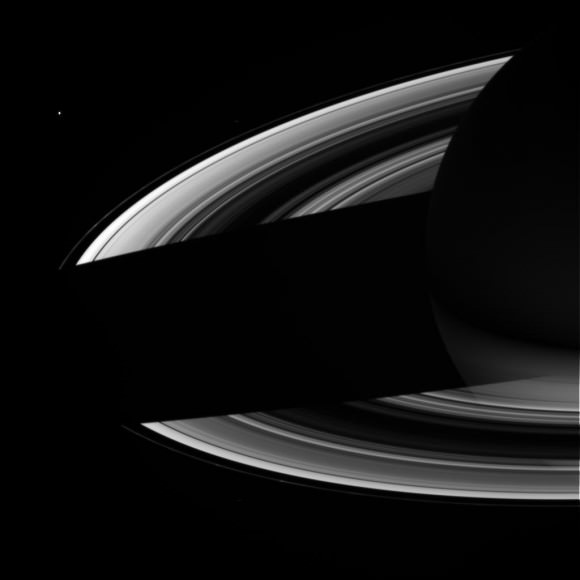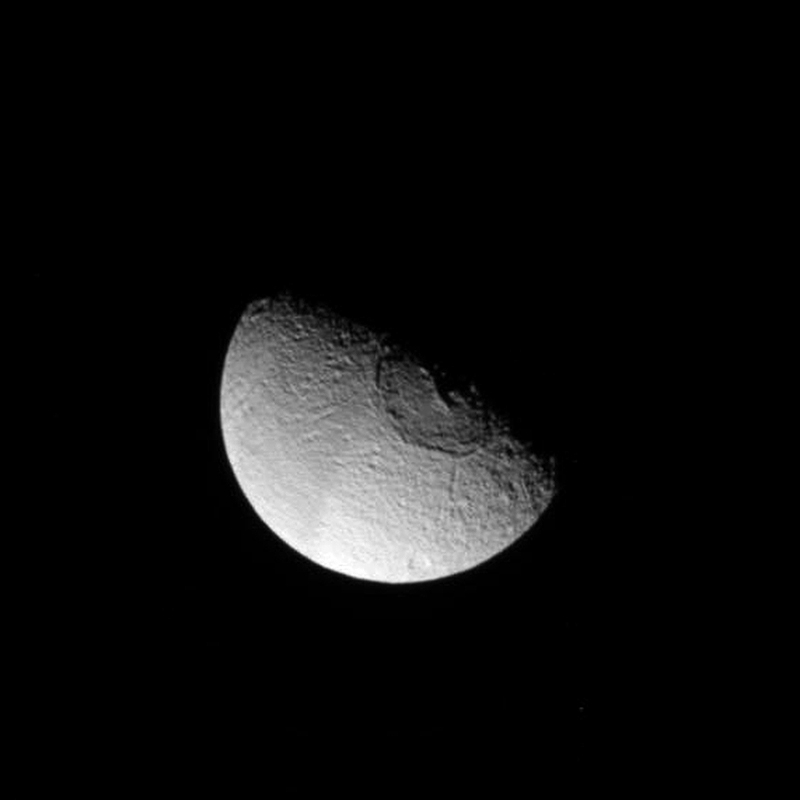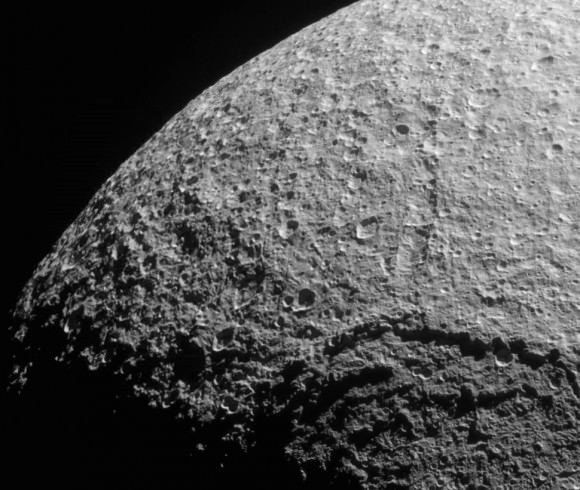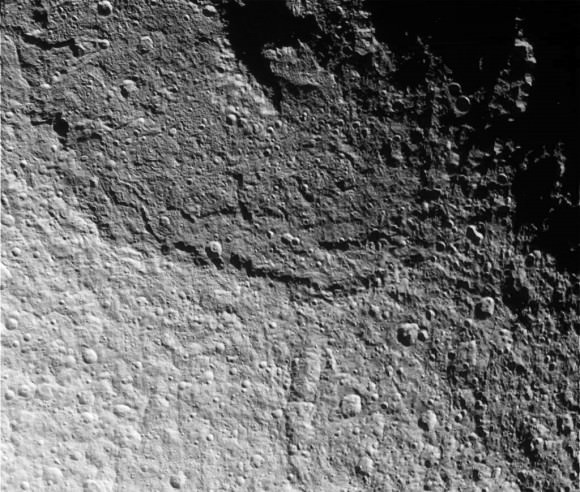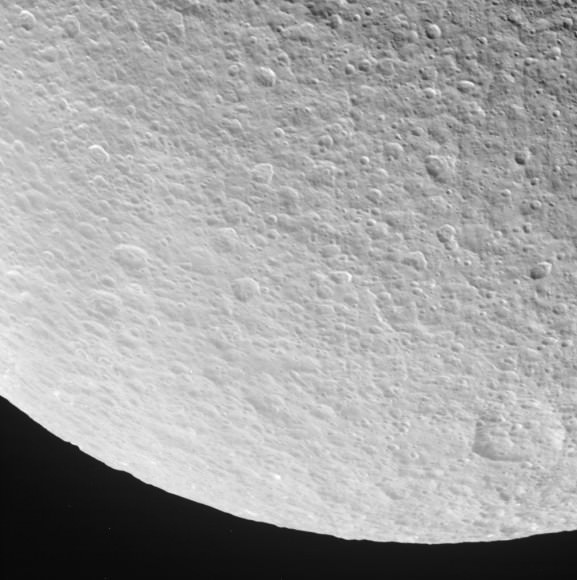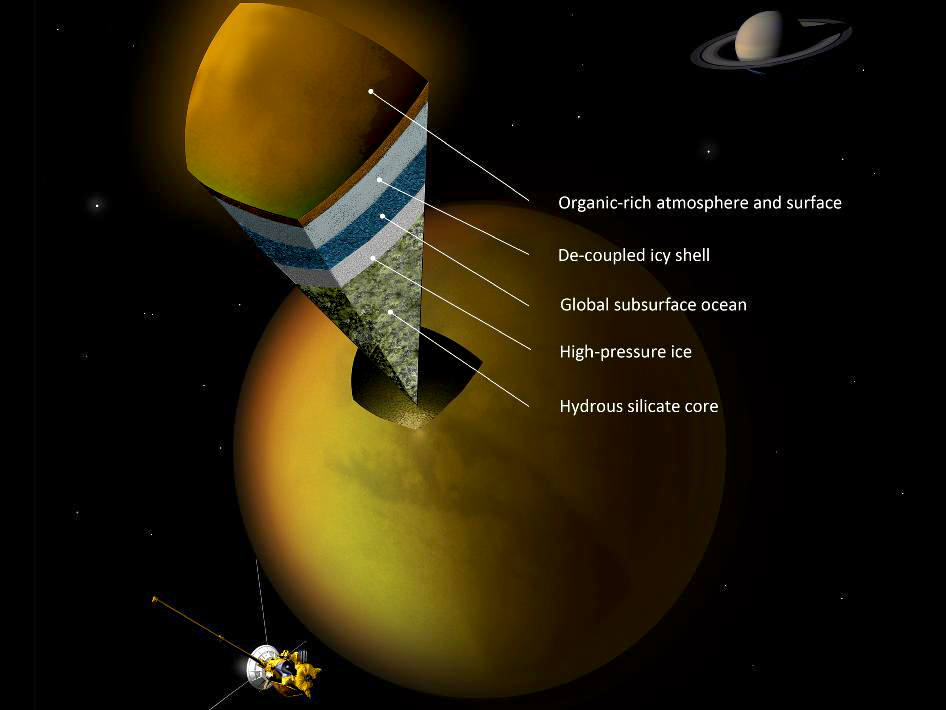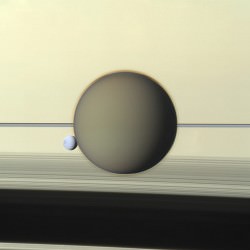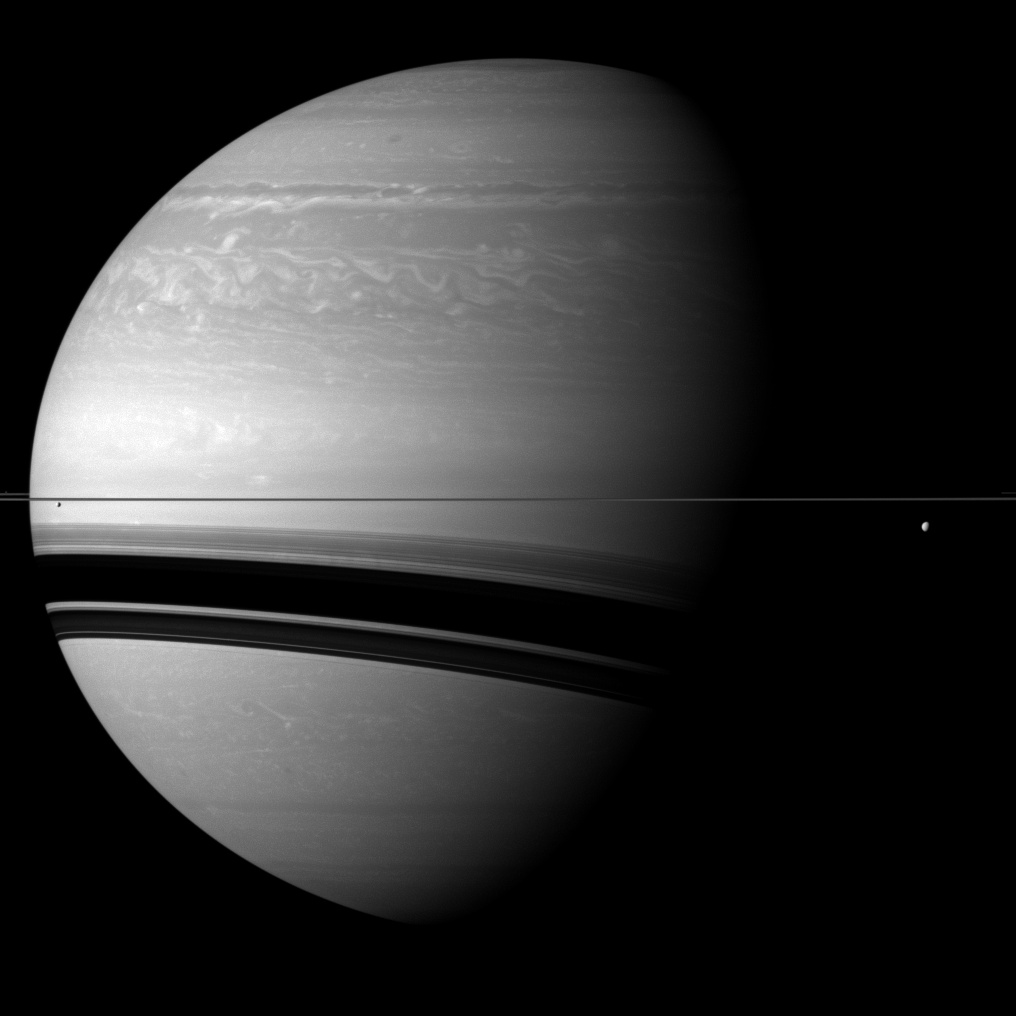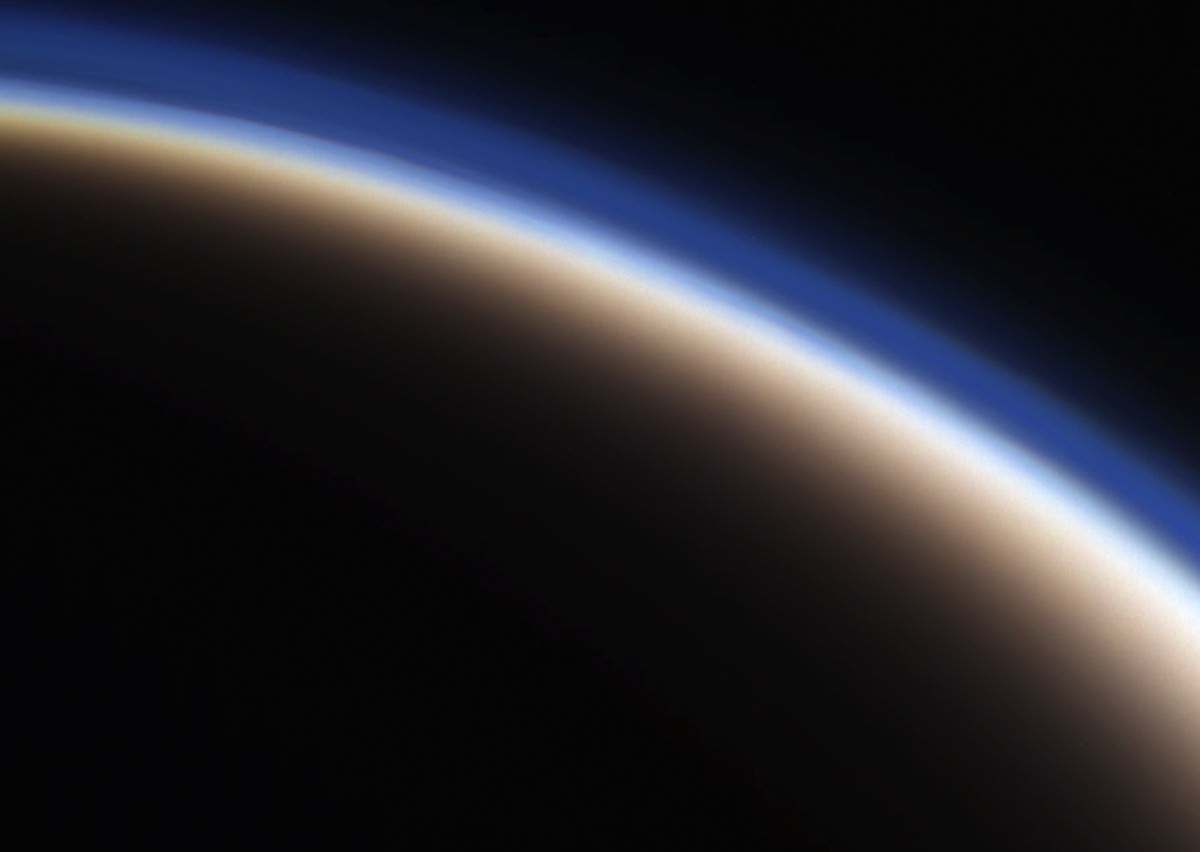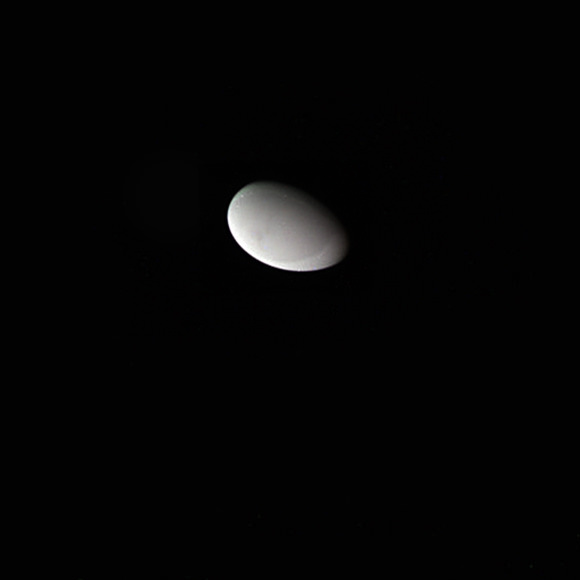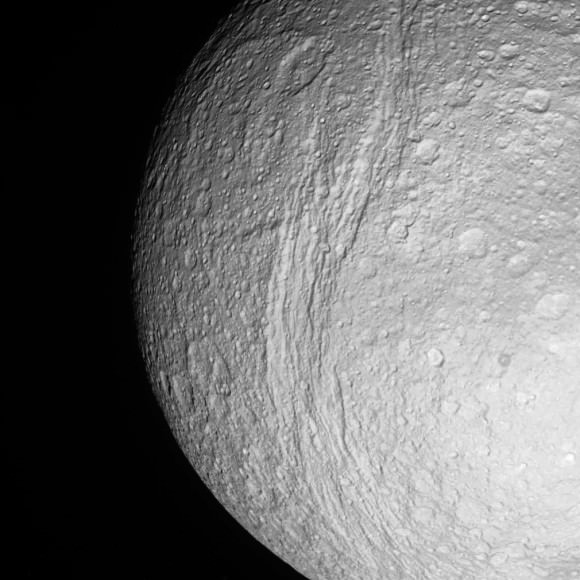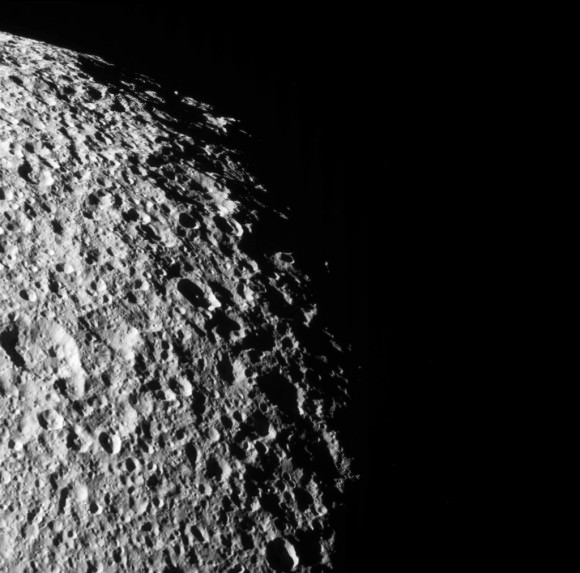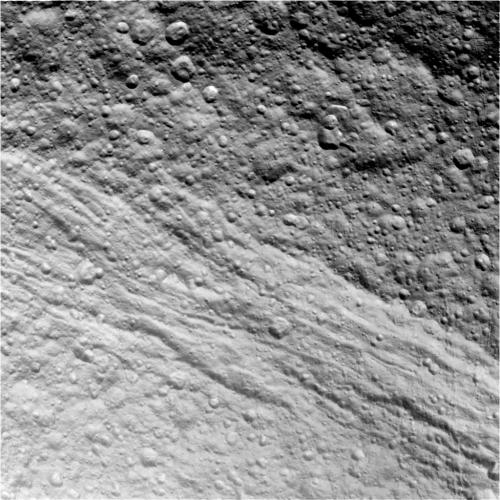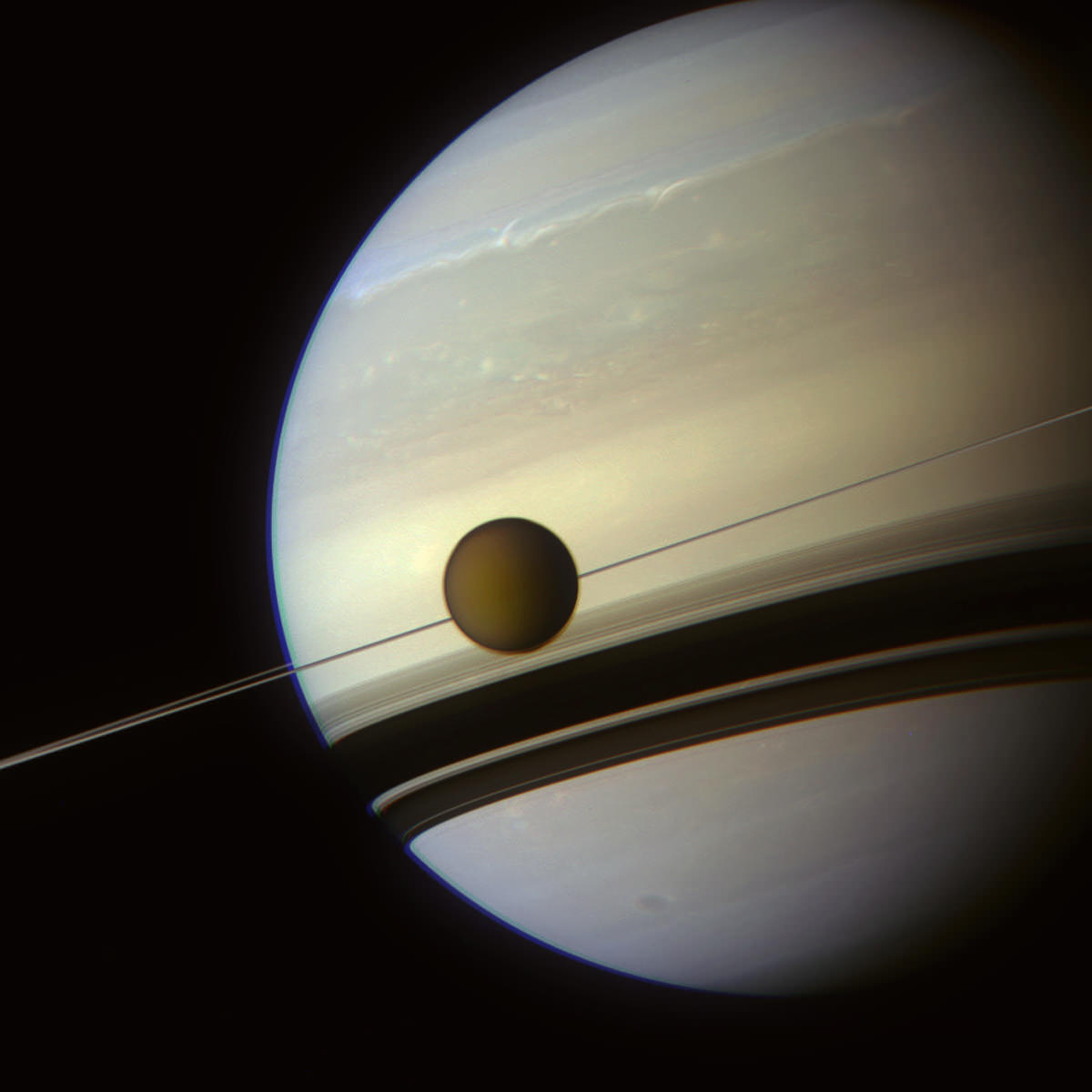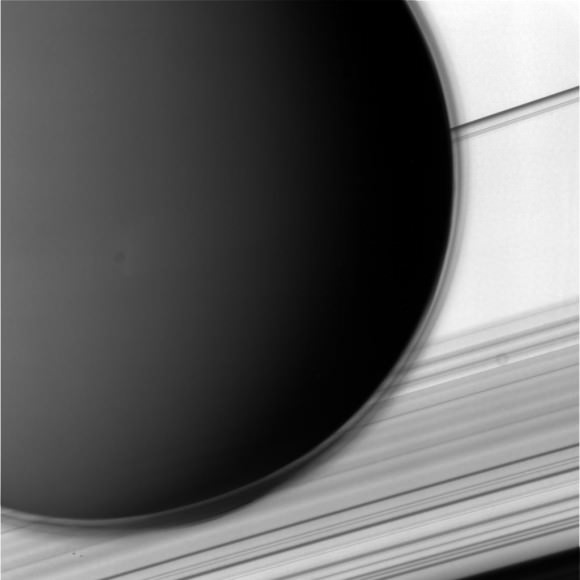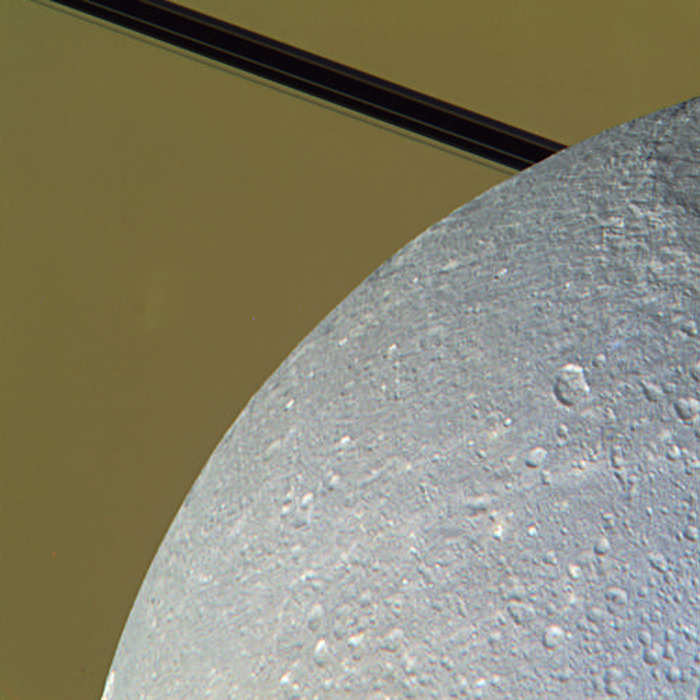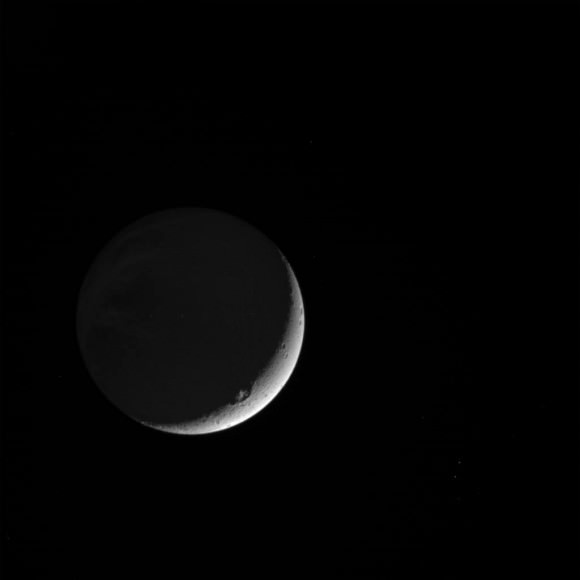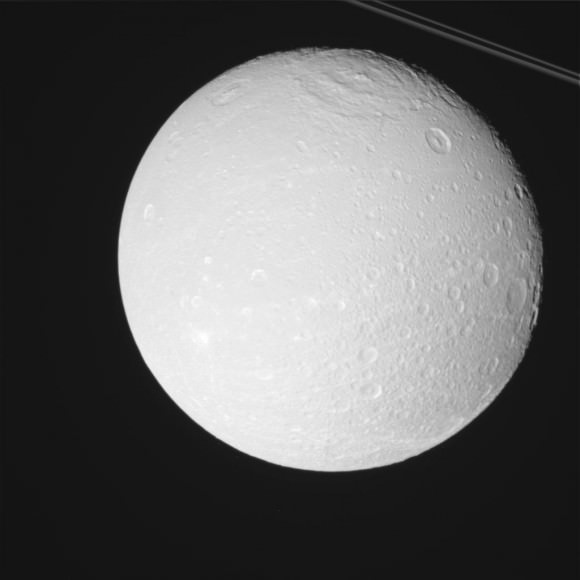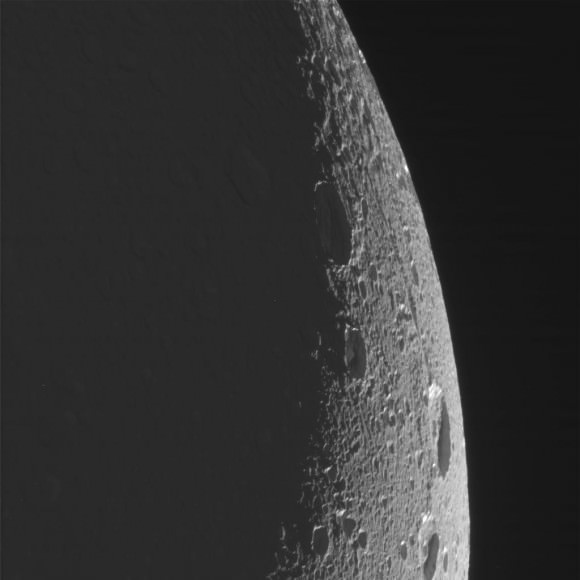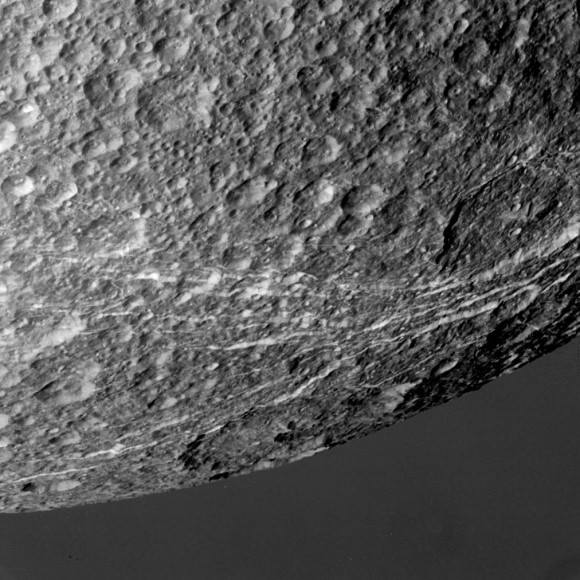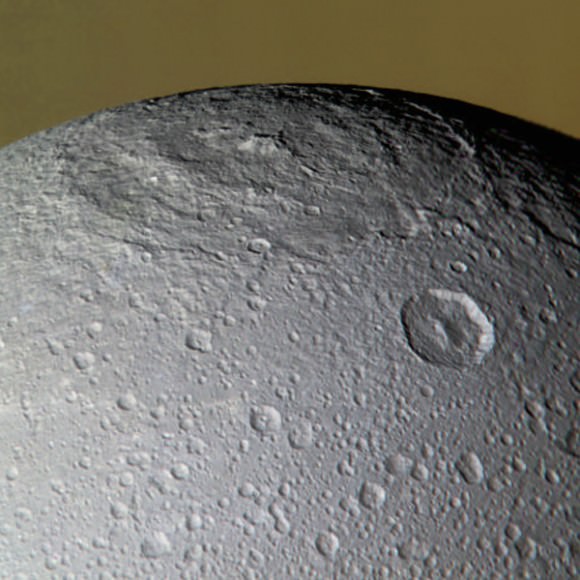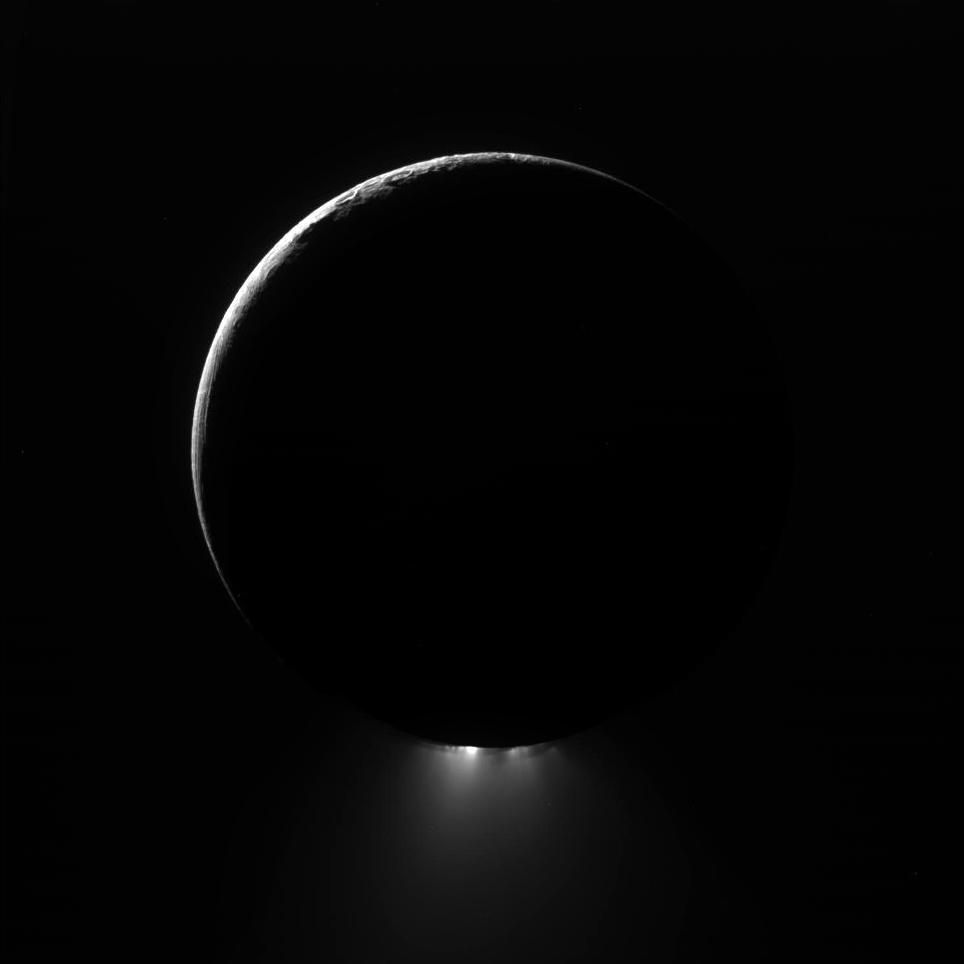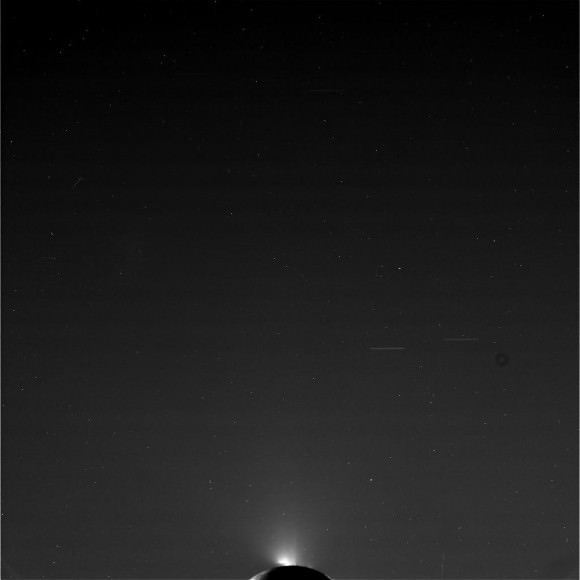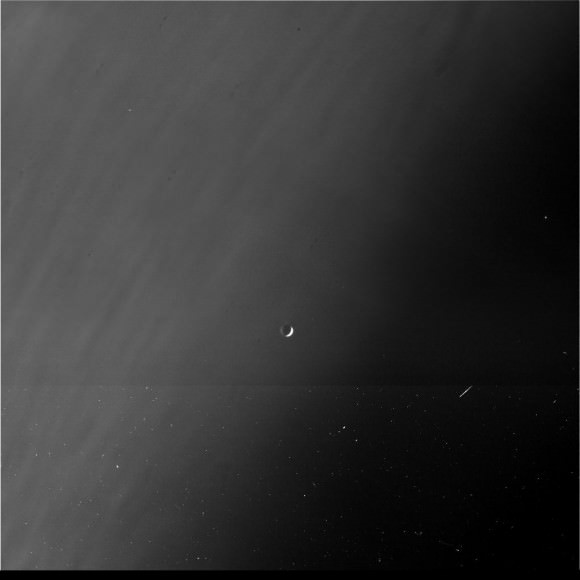Now that Cassini has gone off on a new trajectory taking it above and below the equatorial plane of Saturn, we’re back to getting some fantastic views of the rings — the likes of which haven’t been seen in over two and a half years!
The image above shows portions of the thin, ropy F ring and the outer A ring, which is split by the 202-mile (325-km) -wide Encke gap. The shepherd moon Pan can be seen cruising along in the gap along with several thin ringlets. Near the A ring’s outer edge is a narrower space called the Keeler gap — this is the home of the smaller shepherd moon Daphnis, which isn’t visible here (but is one of my personal favorites!)
The scalloped pattern on the inner edge of the Encke gap downstream from Pan and a spiral pattern moving inwards from that edge are created by the 12.5-mile-wide (20-km-wide) moon’s gravitational influence.
Other features that have returned for an encore performance are the so-called propellers, spiral sprays of icy ring material created by tiny micro-moons within the rings. Individually too small to discern (less than half a mile in diameter) these propeller moons kick up large clumps of reflective ring particles with their gravity as they travel through the rings, revealing their positions.
The three images above show a propeller within the A ring. Nicknamed “Sikorsky” after Russian-American aviator Igor Sikorsky, the entire structure is about 30 miles (50 km) across and is one of the more well-studied propellers.
Scientists are eager to understand the interactions of propellers in Saturn’s rings as they may hold a key to the evolution of similar systems, such as solar systems forming from disks of matter.
See a video of a propeller orbiting within the rings here, and here’s an image of one that’s large enough to cast a shadow!
“One of the main contributing factors to the enormous success we on the Cassini mission have enjoyed in the exploration of Saturn is the capability to view the planet and the bodies around it from a variety of directions,” Cassini Imaging Team Leader Carolyn Porco wrote earlier today. “Setting the spacecraft high into orbit above Saturn’s equator provides us direct views of the equatorial and middle latitudes on the planet and its moons, while guiding it to high inclination above the equator plane affords the opportunity to view the polar regions of these bodies and be treated to vertigo-inducing shots of the planet’s glorious rings.”
As always, keep up with the latest Cassini news on the mission site here, and read more about these images on the CICLOPS imaging team page here.
Image credits: NASA / JPL / Space Science Institute.

